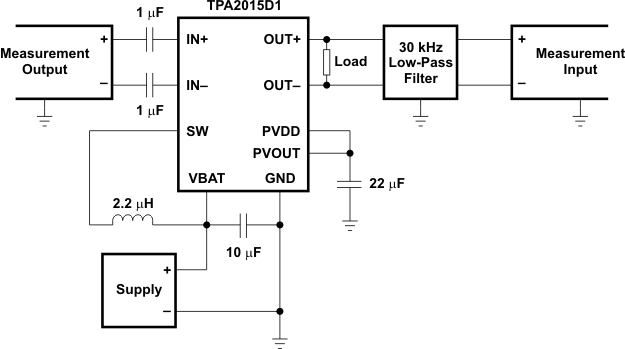ZHCSQQ4C November 2011 – June 2022 TPA2015D1
PRODUCTION DATA
- 1 特性
- 2 应用
- 3 说明
- 4 Revision History
- 5 Device Comparison Table
- 6 Pin Configuration and Functions
- 7 Specifications
- 8 Parameter Measurement Information
-
9 Detailed Description
- 9.1 Overview
- 9.2 Functional Block Diagram
- 9.3 Feature Description
- 9.4 Device Functional Modes
- 10Application and Implementation
- 11Power Supply Recommendations
- 12Layout
- 13Device and Documentation Support
- 14Mechanical, Packaging, and Orderable Information
8 Parameter Measurement Information
All parameters are measured according to the conditions described in the Section 7 section.
Figure 8-1 shows the setup used to test the device's typical characteristics.

A. The 1 µF input capacitors
(CI) were shorted for input common-mode voltage
measurements.
B. A 33 μH inductor was placed in
series with the load resistor to emulate a small speaker for efficiency
measurements.
C. The 30 kHz low-pass filter is
required even if the analyzer has an internal low-pass filter. An R-C low pass
filter (100 Ω, 47 nF) is used on each output for the data sheet graphs.
Figure 8-1 Test
Setup for Typical Characteristics Graphs